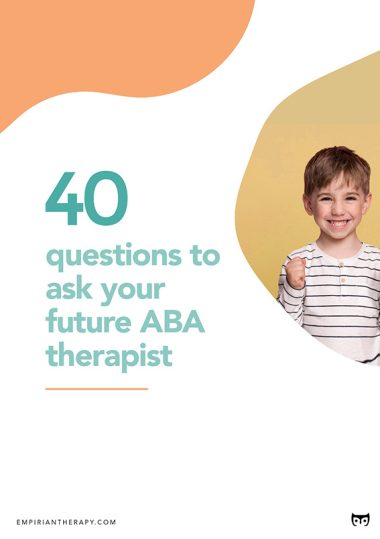It’s no secret that we’re living in a time where all kinds of claims are out there and it’s often hard to know what to believe.
But distinguishing fact from fiction is no less important now than it has ever been—especially when it comes to areas that will impact your children’s future and well-being.
Understanding what ABA is and what ABA isn’t is crucial for any parent trying to decipher what resources and options are available to their families.
There are some common myths and misconceptions about ABA therapy. But, what do the facts actually have to say?
Myth #1
Myth: ABA is only for those with autism
Fact: ABA can be used to improve socially significant behavior in all individuals.
ABA is based on the science of behavior, and therefore can be applied to change any behavior of social significance in any person. The goal of ABA is to increase independence and autonomy no matter who is receiving the therapy. Just to give a few examples, ABA is also used to help in cases such as a child exhibiting anxiety, rigidity or excessive anger as well as mental health difficulties. It can even be applied to health and fitness, sleep habits, toilet training, feeding difficulties and more.
Myth #2
Myth: ABA is cookie cutter and won’t address my needs
Fact: ABA is highly customizable and individualized.
There is no one-size-fits-all version of ABA—rather, it is a general approach to behavioral change that can be tailored to the unique needs of each person who seeks it out for help. Before starting ABA therapy, behavior analysts assess the individual’s skills and develop learning objectives based on their specific needs.
Myth #3
Myth: ABA teaches people to be rigid and robotic
Fact: There’s a lot more flexibility in ABA than meets the eye—ABA teaches individuals how to be flexible and apply learned skills to multiple situations.
It’s true that ABA is very structured in the initial stages of intervention, but this is only a temporary characteristic of the therapy. The part that many people think of as rigid comes before a learner has gained basic skills, such as following directions, communicating, and joint attention. Rote responding is sometimes taught, but steps are taken to fade the supports and help the learner apply the skills to various situations.
Myth #4
Myth: ABA can “cure” Autism
Fact: Autism is not something that needs to be “cured” and ABA does not seek to cure it.
People with Autism do not need to change who they are or how they feel. It’s true that people in the past held many misguided understandings of what Autism is and what should be done about it. However, science and society at large now recognize that individual difference and neurodiversity are things to be embraced, and can be the source of unique talents and abilities. The goal of ABA for Autism is to help those with Autism live their best life in a non-Autistic world, by helping them communicate, socialize, and navigate the world.


